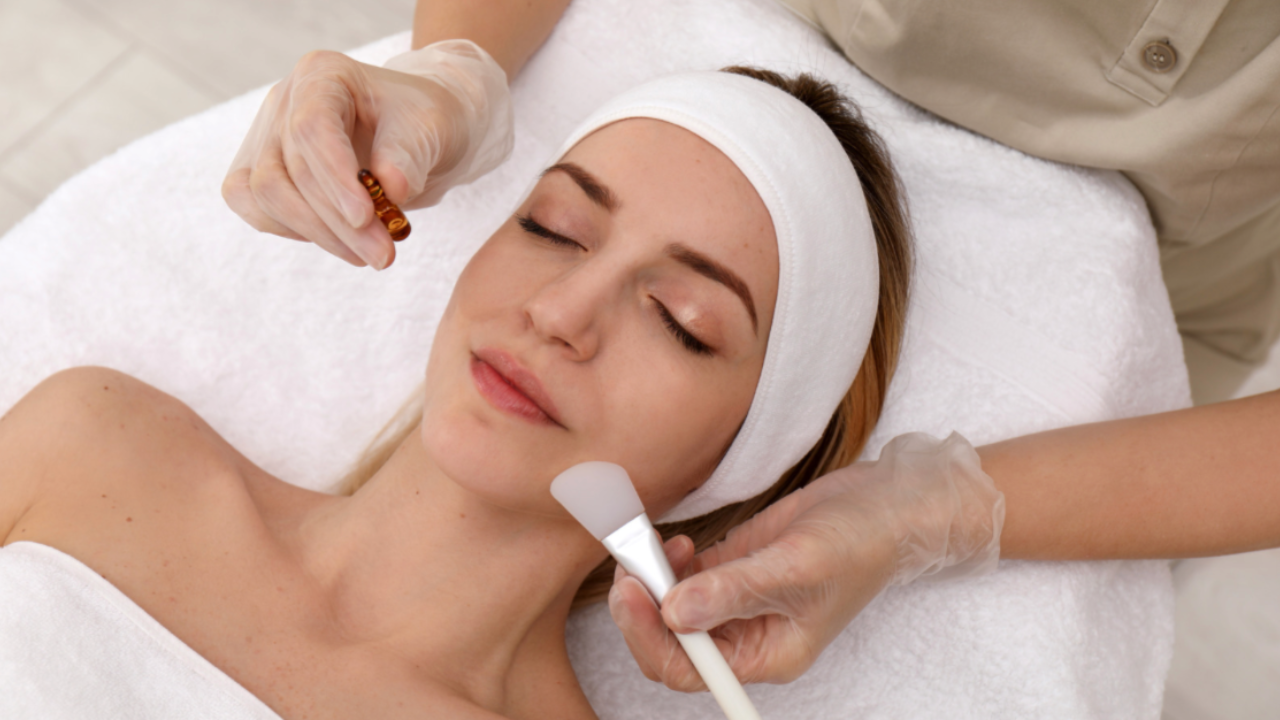Chemical Peels And Your Skin

The epidermis (the outer portion of your skin) is composed of multiple layers of epidermal cells. These cells help maintain your skins internal temperature and prevent dehydration by providing a barrier against the external environment, the epidermis in turn protects your tissue.
Tonofilaments (microscopic fibers) run between individual cells and anchor them together. An extracellular surrounds each cell, and acts as glue, to keep the cells together. Over time these cells are shed through the body’s means of exfoliation. Acids within the chemical peel raise the acidity of the skin to a 3.8 pH level. Normally, skin has a pH of 5.5, but by changing the pH level the cells that form the “glue” between dead skin and healthy skin are chemically loosened. Therefore, exfoliation occurs as dead skin is removed to reveal healthy skin underneath. By speeding up this process, you restore a more youthful glow to the skin and help to eliminate signs of aging.
Types of Chemical Peels
There are 3 types of chemical peels based on how deeply they exfoliate the skin
Superficial Peels:
Superficial Peels are used for individuals whose skin issues are only on the top layer of the epidermis, such as our “Pretty Peel” as these do not penetrate the deeper layers. They take 1-7 days to heal, as the skin recovers more quickly with these. They can be done every 2-5 weeks, and can take up to 5 superficial peels to see noticeable results.
Medium-depth Peels:
These kinds of peels are best for fine wrinkles, minor hyperpigmentation, minor acne scars, and sun-damaged skin. Like our “VI Peel”, they can take 7-14 days to heal, and it is important to remember that swelling is worst at 48 hours after treatment and can cause blisters. One should avoid sun exposure until the skin fully heals.
Deep Peels:
Deep Peels are typically used only for moderate to severe sun damage, wrinkles, and hyperpigmentation. A great option we offer is the “Cosmelan peel” to reduce dark spots and pigments. The skin takes 14-21 days to heal and one must avoid sun exposure for 3-6 months. For this reason, laser treatments are often more effective in treating deeper skin issues.
Realistic vs. Unrealistic Goals of Chemical Peels:
If you are looking to correct sun damage, reduce mild scarring, reduce or eradicate wrinkles, improve dark skin discoloration, remove blackheads, and reduce excessive skin oils, chemical peels are a great option. However, if you are looking to reduce the appearance of blood vessels in the skin, remove kelodial scars, or provide a facelift, it would be best to consult with a dermatologist.
Side Effects:
It is important to be aware of the a diverse effects of chemical peels that include redness that lasts for months, permanently lightened patches of skin, scarring, and temporary dark patches of skin. To avoid these side effects consult with your dermatologist on how to best take care of your skin after treatment.
Chemical Peels are a great option for those that are looking to improve the appearance of their skin. We recommend seeing a licensed esthetician, like our esthetician Connie, to try out our peels such as the VI Peel, Pretty Peel, and Cosmelan Peel.


